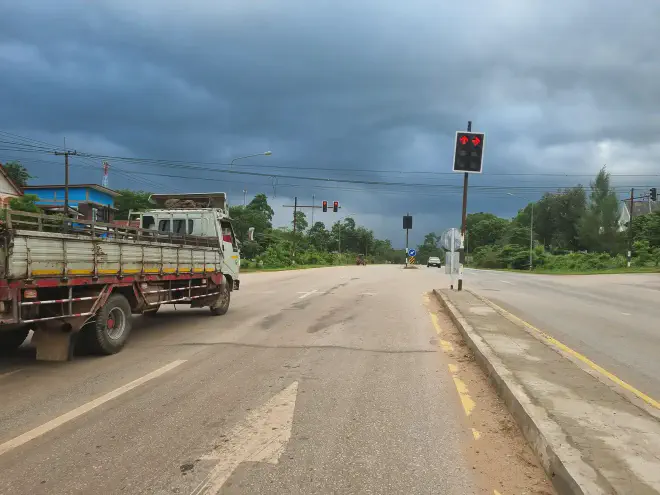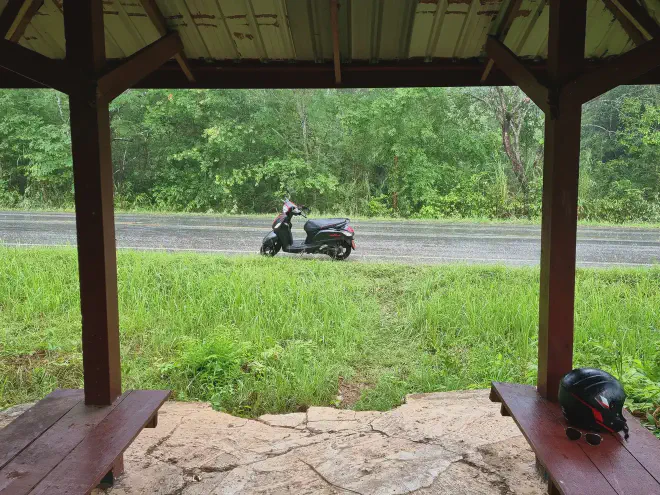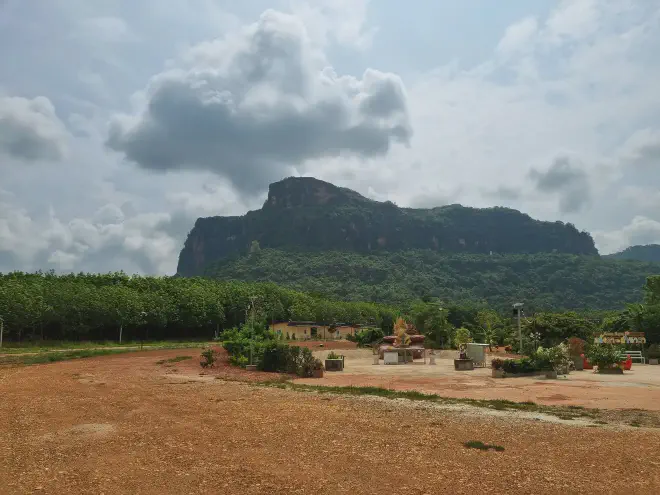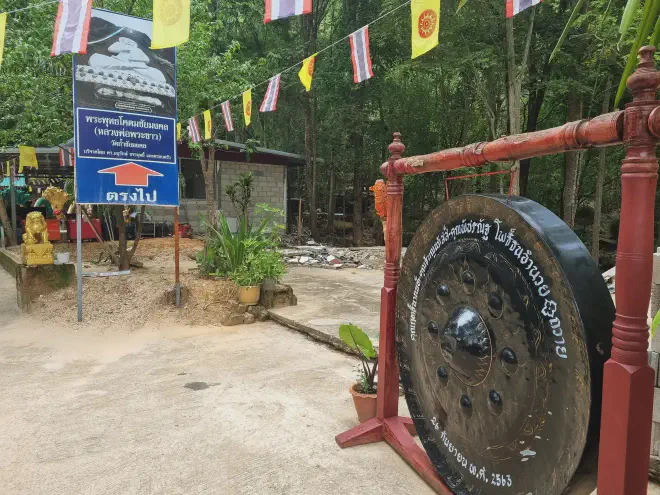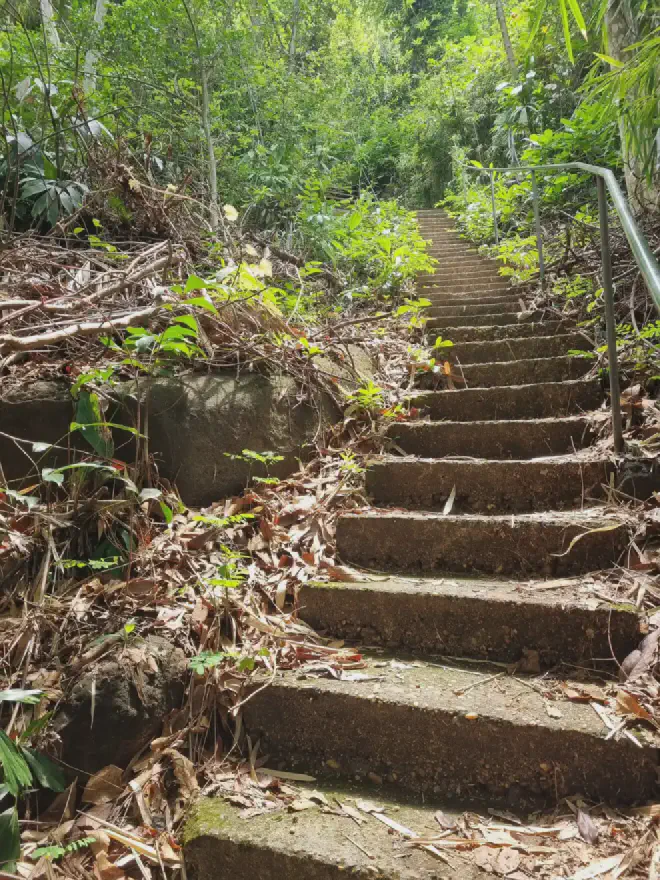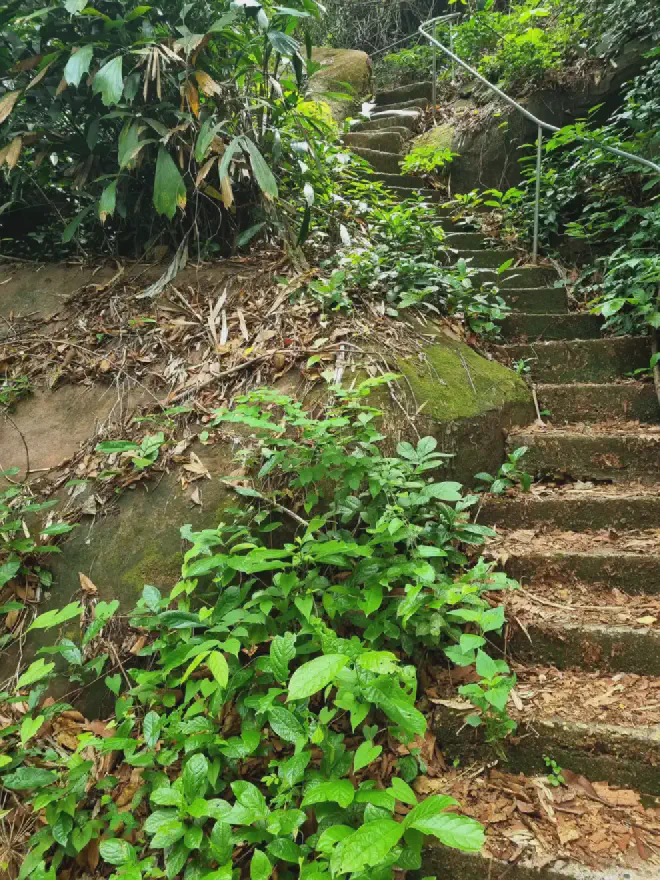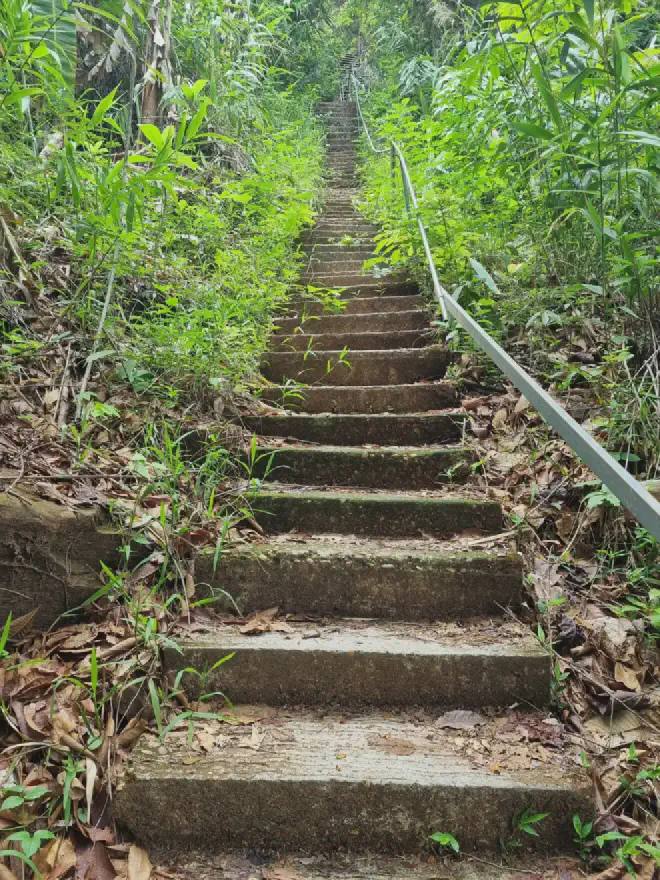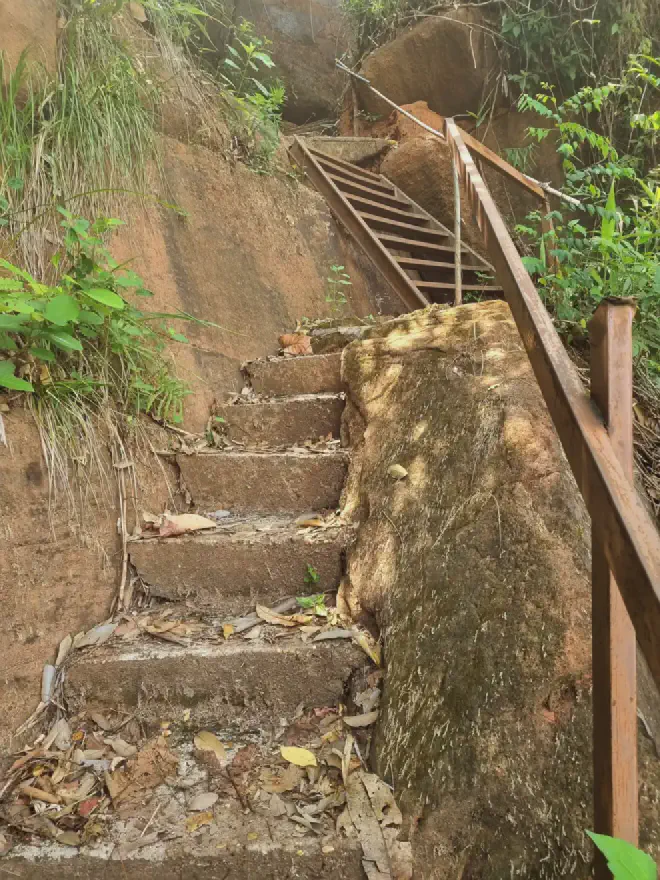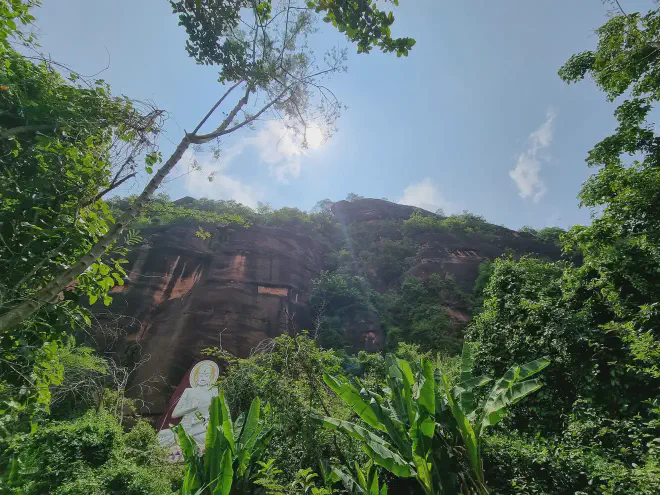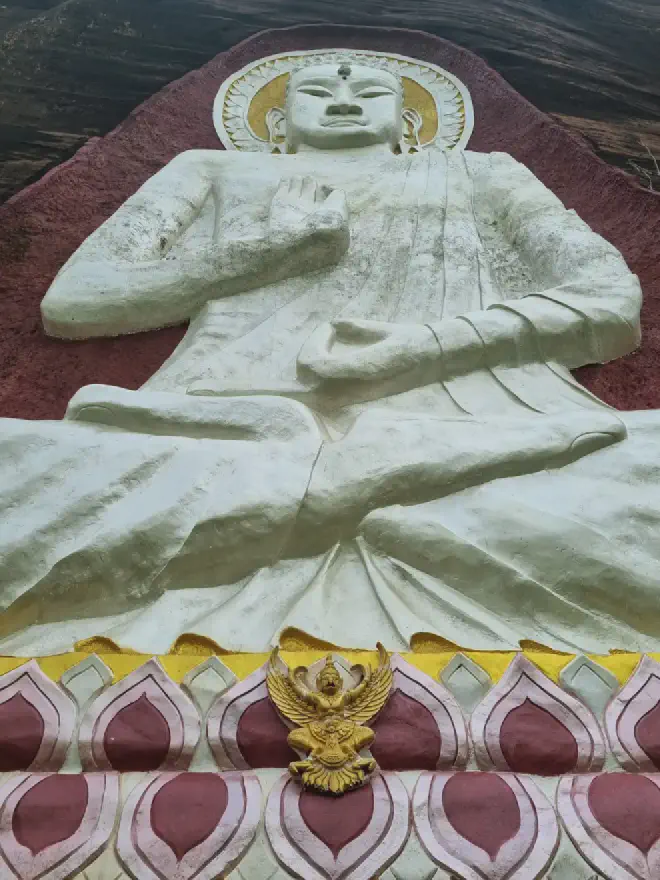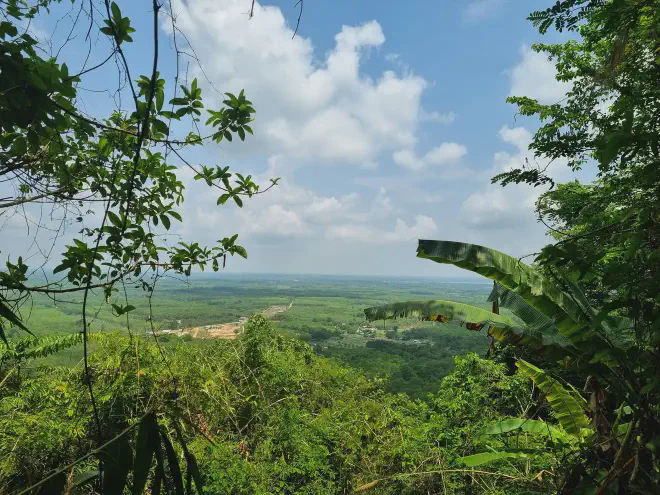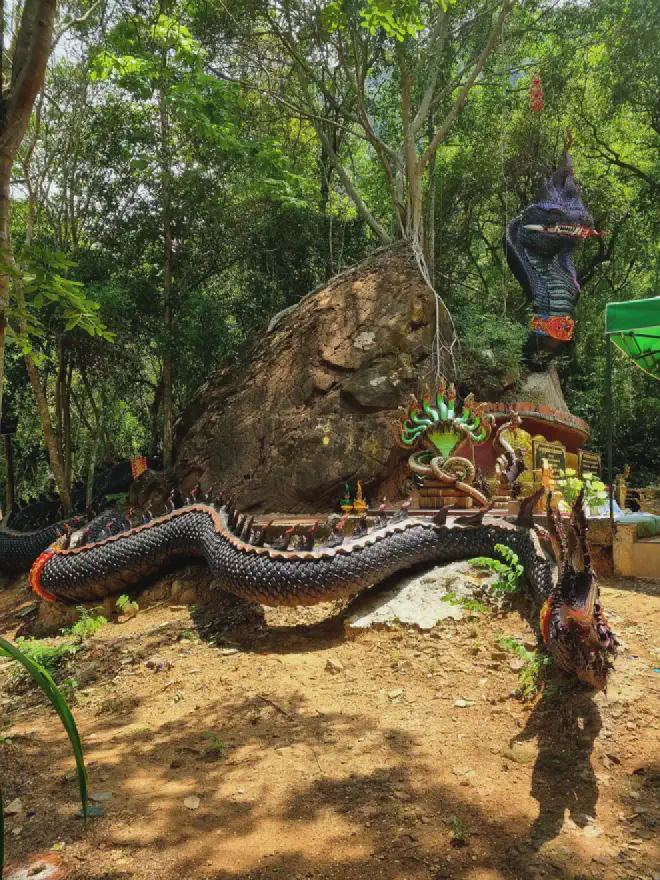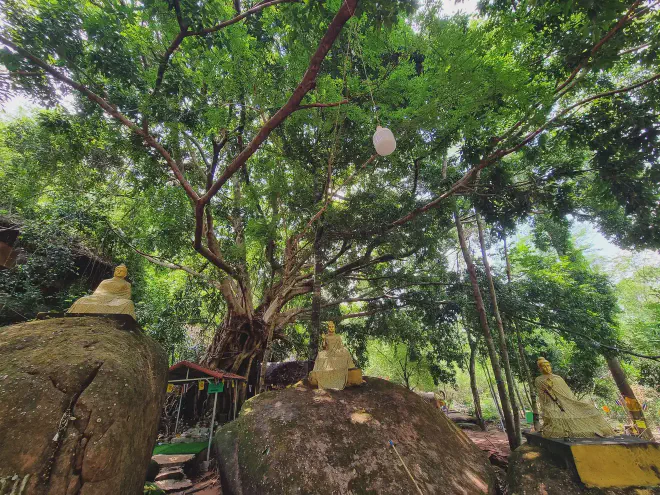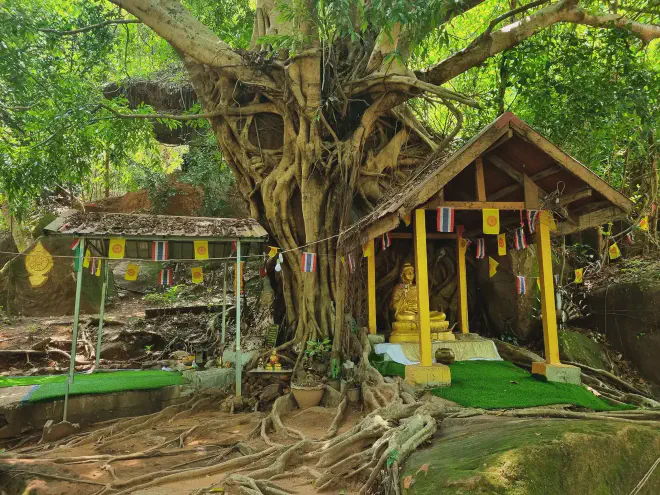Wat Tham Chaimongkol
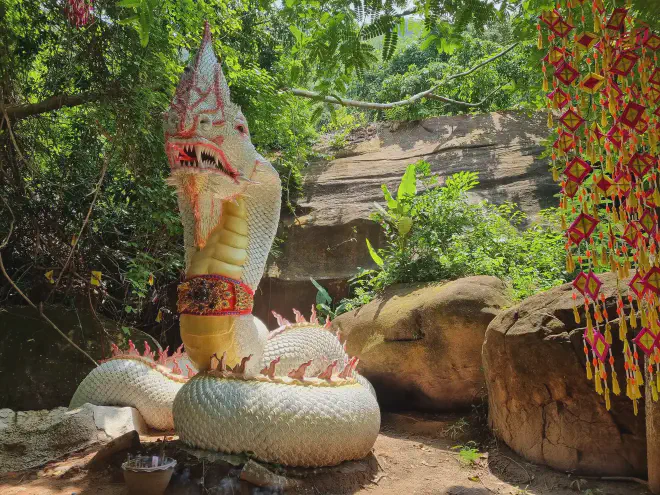
Table of Contents
Entering Wat Tham Chaimongkol #
This was the start of a big day, where I hoped to visit three major attractions in Bueng Kan… And it did not start well.
I could see there was heavy rain coming that morning, so I tore out of bed, skipped breakfast and tried to get a head start on the 2-hour journey to my first stop, Naka cave.
It was about an hour in, I saw the sky start to get dark, and I felt cold for the first time this trip. Before long, it was lightly spitting, but I was determined to make it 5 minutes down the road to the next town for a stop and breakfast.
I reached the edge of town (photo below), and the rain had eased up slightly… I was feeling good, and wanted to push on just one more town, in the hope of finding a more comfortable café to settle in to while the storm passed.
Pretty much midway between towns, the storm hit, and it hit hard! Even riding-to-the-conditions became futile, as I just could not see. I found a bus stop (or what, I think, is a bus stop) and decided to sit it out here. While I was the first here, I would not be the last, with a few locals joining me in the bus stop of shame, as we had all underestimated the rain.
A bunch of small talk and charades later, the rain had eased up, and we all set off on our way!
An hour or so later, I had dried out and arrived at what, I thought, was naka cave… But it looked more like a heavy construction zone. I saw some signs indicating the trail head, but was abruptly told not to proceed, and I should just leave.
Not wanting to have wasted the trip, I found an alternate location on the same mountain formation, and rode off to explore this.
Welcome to Wat Tham Chaimongkol #
With nothing but a pin on a map, I made my way around the mountain to Wat Tham Chaimongkol.
Upon arrival, this place was in stark contrast to my first destination. There was a cool calm to the temple entrance, and as I approached the gate, I was wonderfully welcomed by the attendant. We spoke briefly about the weather, before she reached down into an esky and handed over a very much needed bottle of water. Refusing any payment, she motioned me forward to visit the temple. (As would be the theme of the day, donations were later made at the temple itself)
Looking up, I saw there was a fork in the road, with instructions written in Thai. I asked if I should go left, or right, and she realised how useless I was 😄. Leaving the counter, she walked around, took me by my hand, and led up the path (to the right). There she gave a brief spiel (in Thai) about the serpent statues, and then pointed me to the path leading up the mountain.
The walk #
I may have a subconscious obsession with mountain-top temples. With an empty stomach, and armed with just my bottle of water, I started the climb up the stairs leading up the mountain. I was ruing my missed breakfast even more now.
It was a steep, but short series of stairs before I reached a dead end. A massive sign warned that the trail to the top of the mountain was closed… Perhaps this is what the first destination was attempting to warn me about.
Nevertheless, the attendant had spoken about the image on the rock. I had passed a small fork a little while back, and decided to explore this second path. This was a very short bush-bash leading to the very base of a large white Buddha engraved and painted into the side of the mountain.
It was impressive walking through the thick forest towards it. The ever present Buddha, literally looking over you as you approached. A bit of rock hopping later, the path ended at the very base of this massive image.
I took a moment to catch my breath, enjoy the impressive view, and admired the blue skies returning. Having found my peace, I returned down to explore the temples and statues at the base of the mountain.
The serpent #
I’ve spoken to a few people who have talked about the mythology of the region. There is a strong belief that the region round the Mekong River was formed by a large serpent. Most folklore in the Issan region involves the serpent, and this is reflected in the animal statue of choice of many (all?) temples I have visited or ridden past.
There were two prayer areas set up, one busy with people offering serpent statues made of leaves. There was a large black snack carefully crafted into and around the rock formation
Located just behind this, was another area with a white snake featured, with various other statues set up. It was impressive to see how they had integrated the artefacts with the natural rock formations and trees in the area.
📷 Photos #

